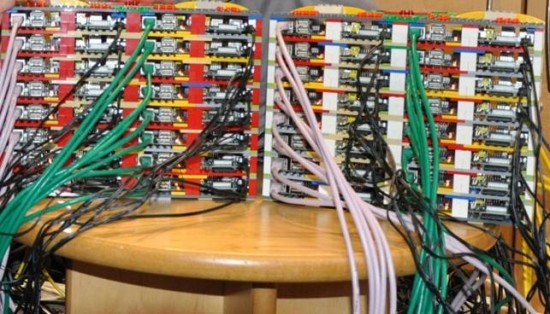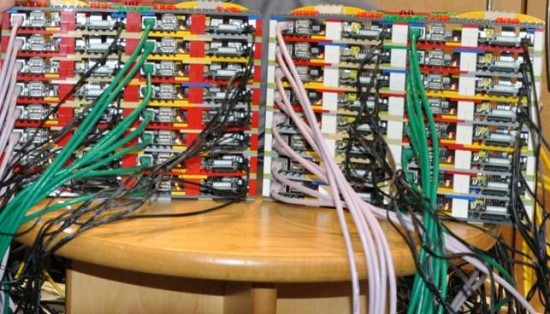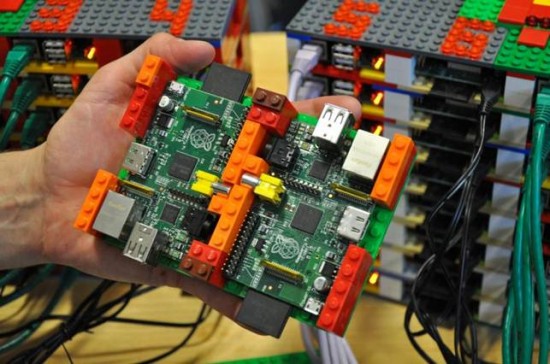- Posted Sept. 15, 2012, 1:09 p.m. - 12 years, 10 months ago
Raspberry Pi might be the answer after all
A couple of months ago I wrote about getting my 13-year old son interested in computer programming.
I bought a Raspberry Pi computer in hopes of letting him get the same feelings of achievement that I had when I started programming with my Sinclair ZX81.
Sadly, after much gnashing of teeth, he moved on to Python IDE on the Mac Mini. Ah, the Raspberry Pi seemed to be a waste of money – until I read what the University of Southampton managed to do. By combining a couple boxes of Lego and 64 Raspberry Pi computers, they built a supercomputer!
Professor Simon Cox and his 6-year old son James started programming a Raspberry Pi using Python and Scratch. With the help of eight people (Andy Everett, Gereon Kaiping, Mark Scott, Neil O’Brien, Oz Parchment, Richard Boardman and Steven Johnston), they assembled 64 Raspberry Pi computers in a rack built out of Lego. James provided the expertise on the Lego construction and helped with the final testing.
Each Raspberry Pi has a 16 GB SD memory card and 256MB of RAM on-board. This gives this supercomputer (named Iridis-Pi after the University’s big Iridis supercomputer) 1TB of storage and 16GB of RAM. All 64 Raspberry Pi modules are connected to a rack of Ethernet switches and use MPI (Message Passing Interface) to communicate among each other.
Can you guess the first task that Iridis-Pi was assigned? Yes, you are right – it calculated the value of Pi.
Professor Cox said in the University’s press release “The team wants to see this low-cost system as a starting point to inspire and enable students to apply high-performance computing and data handling to tackle complex engineering and scientific challenges as part of our on-going outreach activities.” His Son, James Cox definitely likes this project: “The Raspberry Pi is great fun and it is amazing that I can hold it in my hand and write computer programs or play games on it.”
If you want to try and get your children interested in building their own supercomputer, you can download the plans and instructions for it, or first review them on the web and see some more pictures of Iridis-Pi at the end of the page. The cost of the computer is fairly inexpensive at a cost of around £2,500, considering the computing power.
Now, all I need to do is purchase some Legos and 63 more Raspberry Pi computers. Hopefully my son will show the same enthusiasm as James.
Pictures via Glenn Harris at Southampton University.
Latest Articles
-
Our latest testimonial for Infix 6
Dec. 19, 2016, 2:40 p.m. -
Most commonly translated Turkish words
Feb. 6, 2015, 9 a.m. -
Merry Christmas & A Happy New Year
Dec. 25, 2016, 8 a.m. -
New Save PDF to SVG feature introduced to Spire.Office
Dec. 23, 2016, 11:54 a.m. -
Editing educational PDFs – a user perspective
July 21, 2014, 8:03 a.m.




